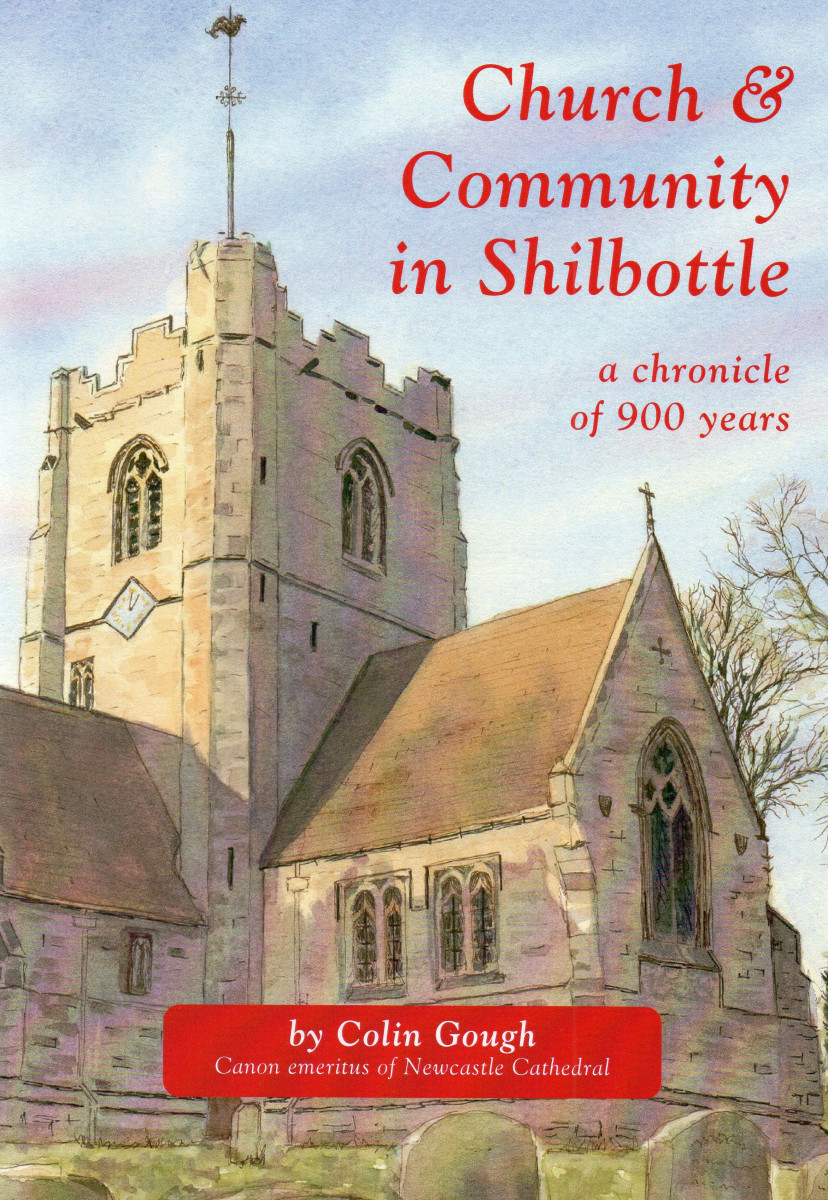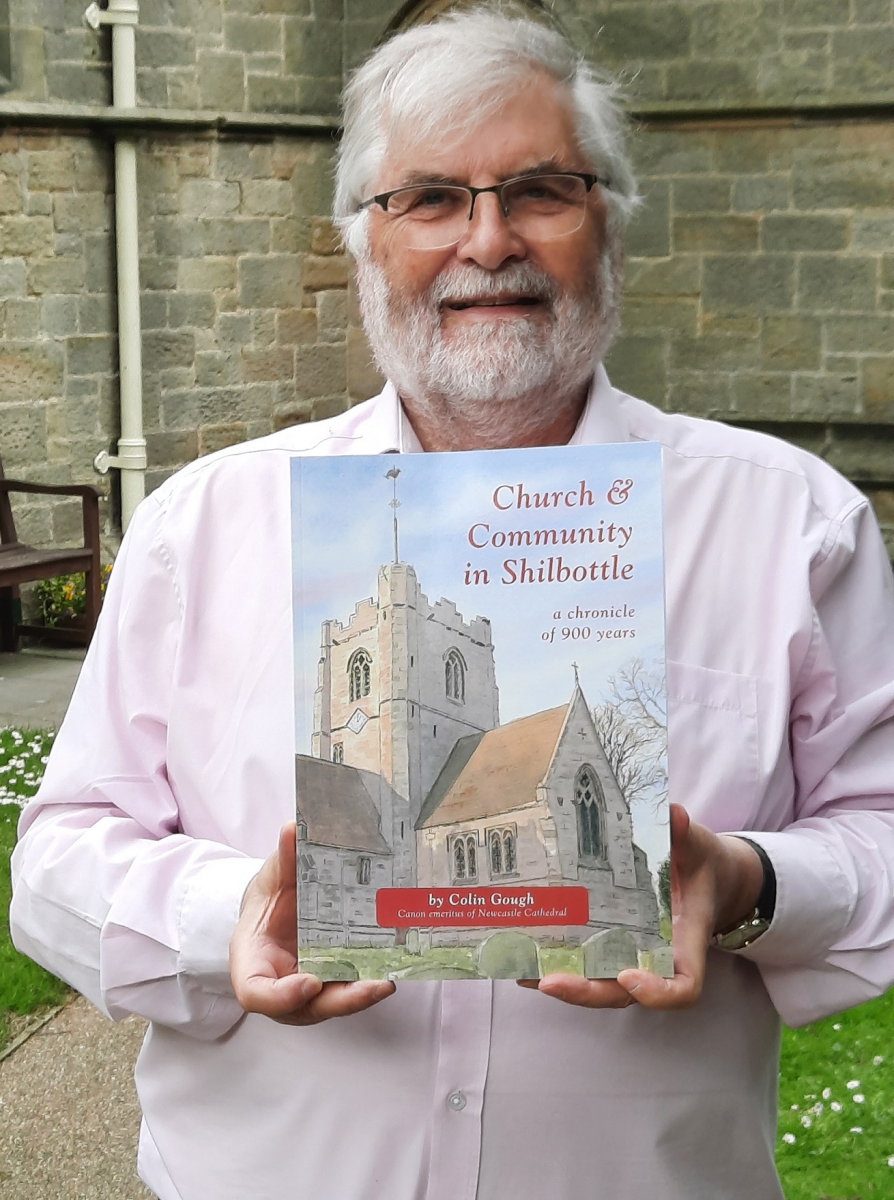 Church & Community in Shilbottle: A chronicle of 900 years
Church & Community in Shilbottle: A chronicle of 900 years
Shilbottle’s most usual claim to fame is that its coal fed the fires of Buckingham Palace but now, Colin Gough’s research into the parish life and history shows that it has much else of which it can be proud.
Where else have vicars so annoyed their parishioners that one tried to murder the Revd Edward Shanks in 1717? Even poor Revd Joseph Cook, squire and parson, fled to Edinburgh because he feared his wife was trying to poison him. Most Shilbottle clergy have however, had a happier time of it and its church community has weathered reivers, reformations, revolutions and regicide.
Using precious parish archives, registers, printed sources and information gathered online, Colin Gough has woven a compelling and intriguing tale that brings to life events long forgotten. With the Earls and Dukes of Northumberland as principal landowners and subject to shifts in church and state, Shilbottle – like most other parishes – focuses the history of the Church of England in a particularly graphic way.
 Revd Canon Colin Gough: Author biography
Revd Canon Colin Gough: Author biography
In 2001, Colin joined the Diocese of Newcastle as Adviser for Continuing Ministerial Development, especially responsible for clergy
in ‘early years’ and for the continuing learning of all in ministry. He was also Vicar of Stannington, for a time Area Dean of Morpeth and appointed an Honorary Canon of Newcastle Cathedral.
He and his wife retired to Shilbottle in 2010 and have now lived there longer than anywhere else since their marriage. Colin was Bishop’s Officer for Retired Clergy for five years and is currently a trustee of the Shilbottle Local History Group, chair of North Northumberland Genealogy Group and a member of the Benefice Ministry Team.
Book review: ‘Church and Community in Shilbottle’
By Bishop Stephen Platten
Having known Shilbottle for the best part of half a century, it was fascinating to read Colin Gough’s account of the village and to discover the full background to the five townships of Woodhouse, Hartlaw and Hazon, Whittle, Newton-on-the-Moor and Shilbottle over almost a millennium.
Previously, the one fact I treasured was that the colliery at Whittle produced the very best quality coal in Britain and supplied Buckingham Palace amongst other places!
Colin’s book is unique in its realm. Some will know the community history of Glanton, published in 2001, but Colin has written a sustained account which is chronological in its first six chapters.
He is well qualified for the task as an Emeritus Canon of our Cathedral with a broad knowledge of the diocese and as one having lived in Shilbottle since retirement from full-time ministry.
The chronological section is followed by chapters focusing on schools, donations, notable parishioners, ministries in the parish and, finally, a brief appendix on Guyzance, an extra parochial place.
Little is known of the early history, but we learn something of the Tisons, the land owners following the Norman Conquest, and then of the Percys who have owned much of the land ever since. Coal mining and agriculture have been key industries for nine centuries with Whittle pit closing as recently as 1987. Throughout, it is fascinating to see how Colin sets all within the wider context of the life of the nation and the world as a whole.
The impact of the Reformation on church life is vividly conveyed and the history is placed within the background of the Church and the community throughout. The Commonwealth period wrought sharp changes, with the eviction of the priest, John Falder, from the Vicarage in 1648, then happily restored as incumbent after the Restoration.
We read of the fate of the church building and most notably of its complete rebuilding during the incumbency of Joseph Golightly.
The new building was consecrated by Bishop Ernest Wilberforce, first bishop of the newly formed Diocese of Newcastle, in October 1885.
The first couple to be married there was Dorothy Widdrington from nearby Newton Hall and Edward Grey, later Lord Grey of Fallodon, Foreign Secretary before and during the first part of the Great War.
This is a great read and along with the history of this parish you will learn much of the history of the wider Church, this diocese and of our glorious county.
- ‘Church and Community in Shilbottle’ is available to buy direct from the author 01665 581100 or Colin1947@me.com (£15 or £19 including posting and packaging), and can also be purchased at Church House reception; K Chem Pharmacy & Post Office, Shilbottle; Alnwick Post Office and Grieve's Stationers, Berwick